Abstract
Ten bacterial isolates capable of growth on tetracyanonickelate(II) [K2[Ni(CN)4]] (TCN) as the sole nitrogen source were isolated from soil, freshwater, and sewage sludge enrichments. Seven of the 10 were identified as pseudomonads, while the remaining 3 were classified as Klebsiella species. A detailed investigation of one isolate, Pseudomonas putida BCN3, revealed a rapid growth rate on TCN (generation time, 2 h), with substrate removal and growth occurring in parallel. In addition to TCN, all isolates were able to utilize KCN, although the latter was significantly more toxic; MICs ranged from 0.2 to 0.8 mM for KCN and greater than or equal to 50 mM for TCN. While growth occurred over a wide range of TCN concentrations (0.25 to 16 mM), degradation was most substantial under growth-limiting conditions and did not occur when ammonia was present. In addition, cells grown on TCN were found to accumulate nickel cyanide [Ni(CN)2] as a major biodegradation product. The results show that bacteria capable of growth on TCN can readily be isolated and that degradation (i) appears to parallel the capacity for growth on KCN, (ii) does not occur in the presence of ammonia, and (iii) proceeds via the formation of Ni(CN)2 as a biological metabolite.
Full text
PDF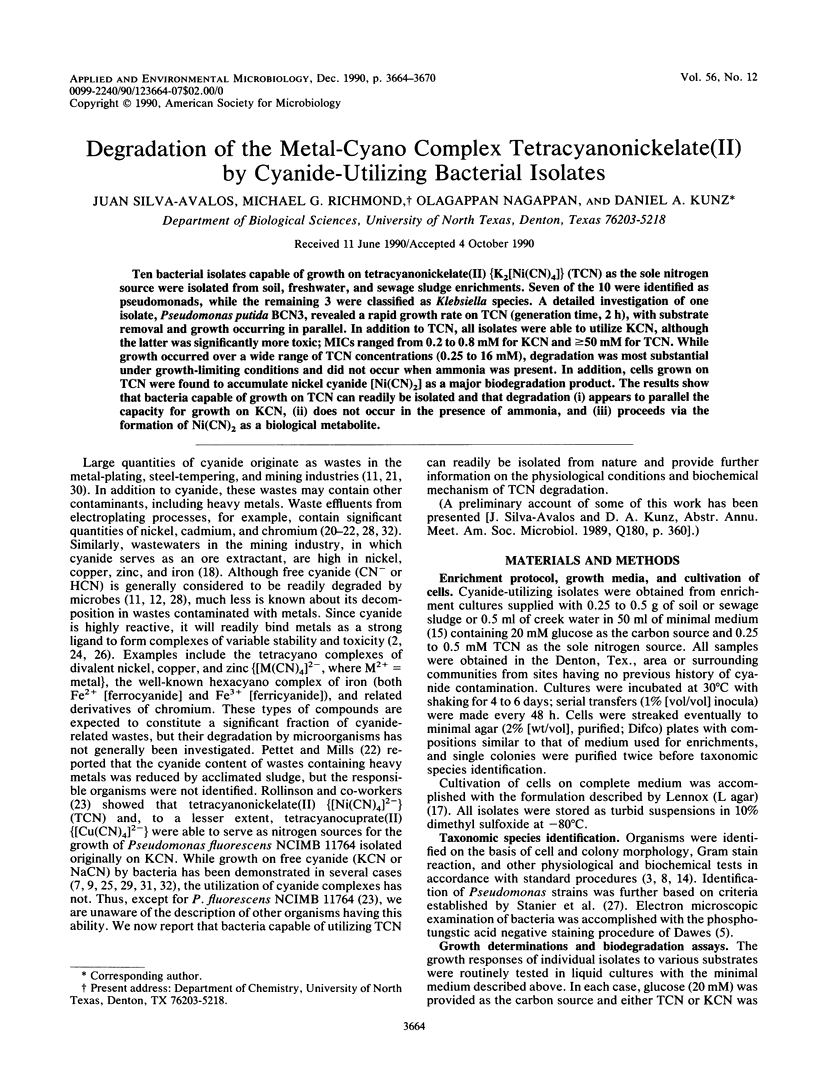
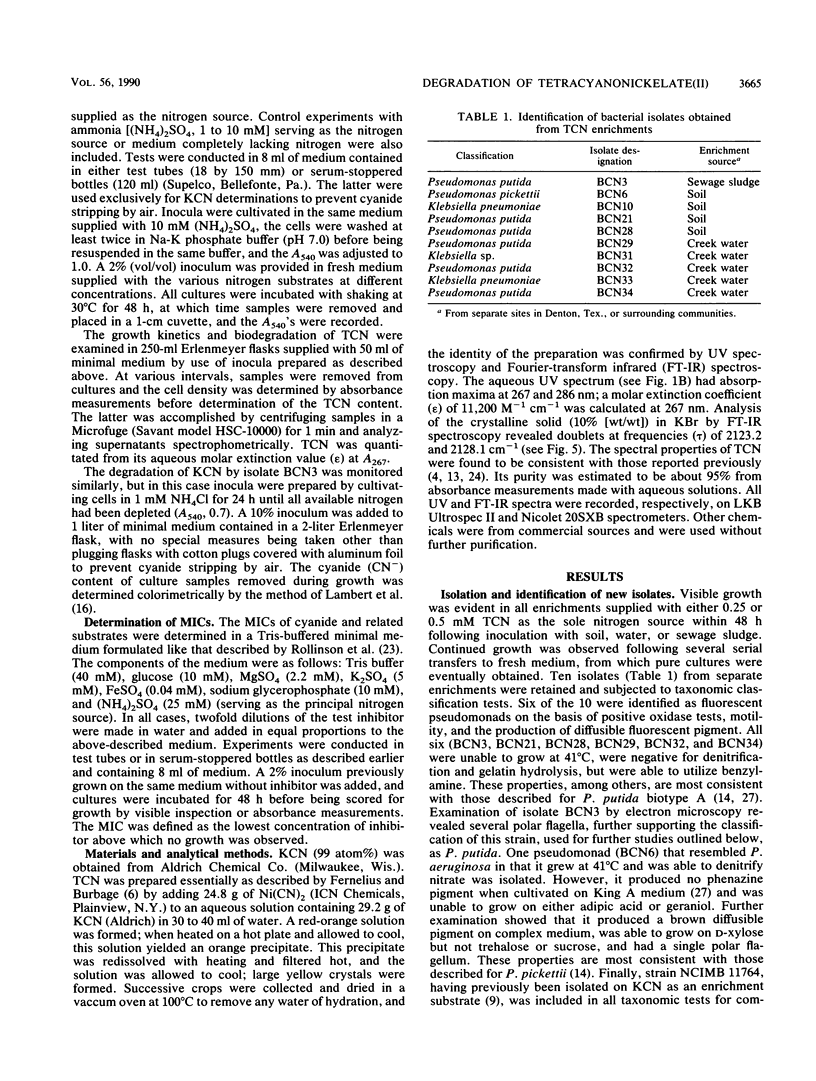
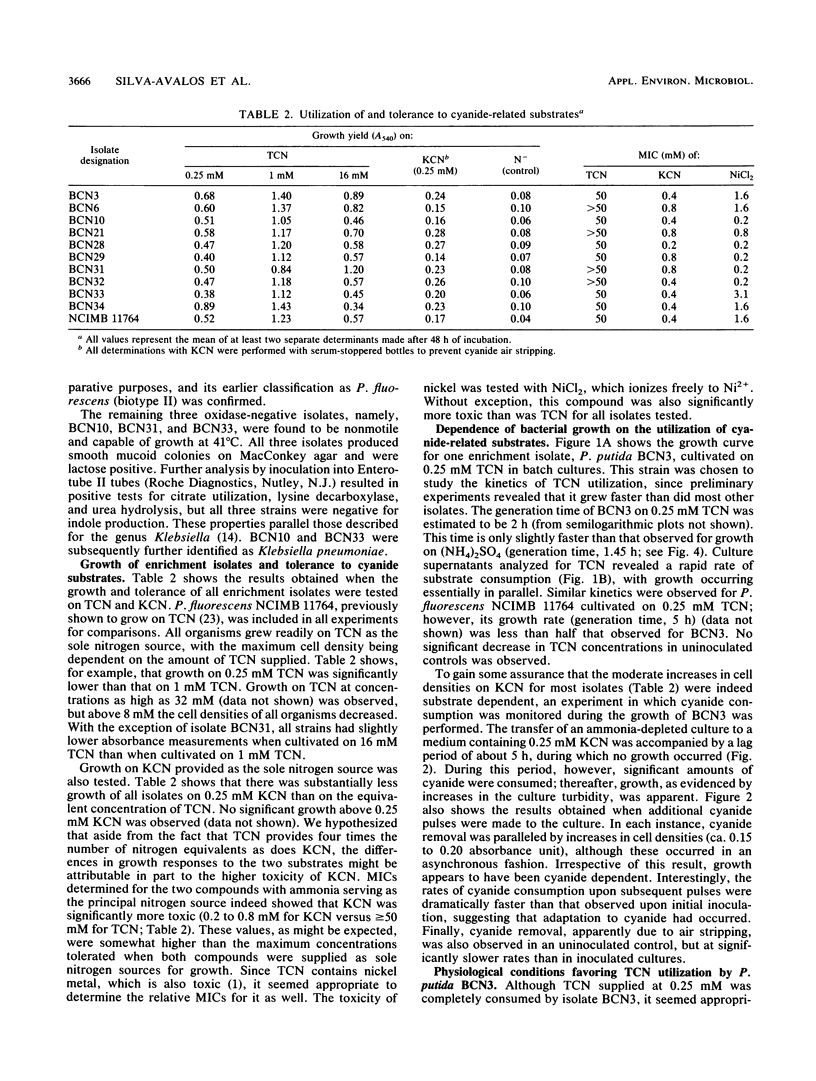
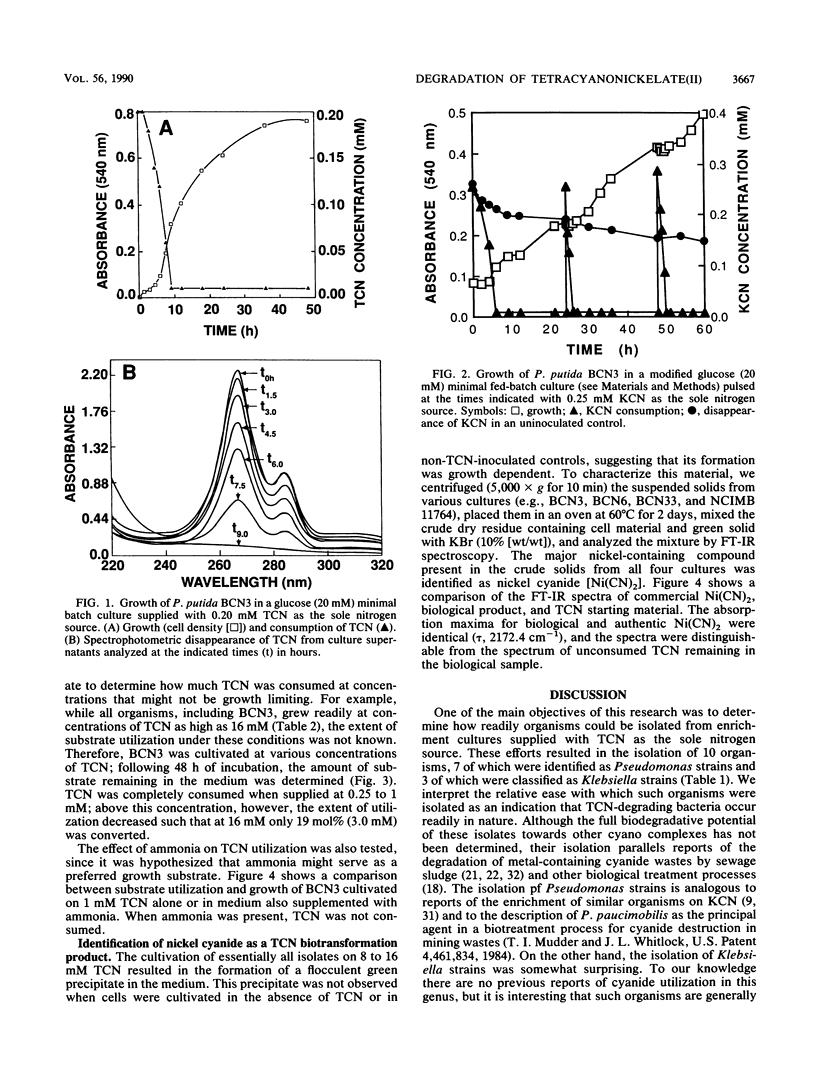
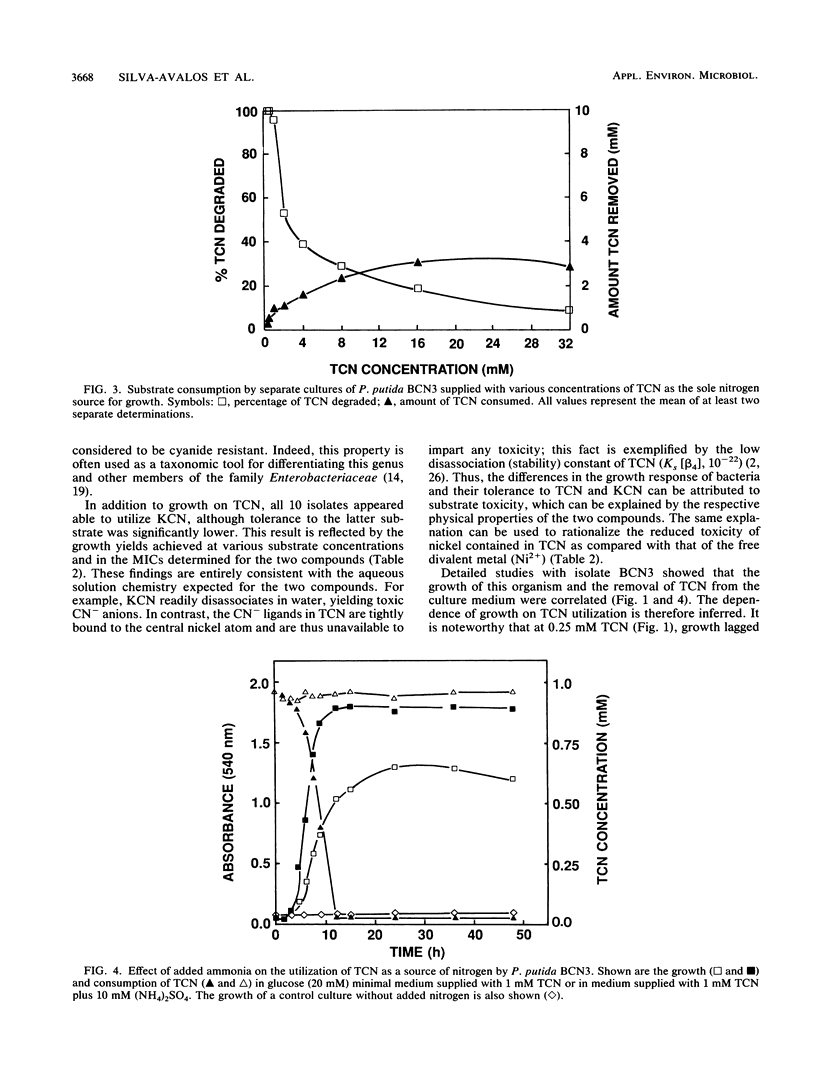
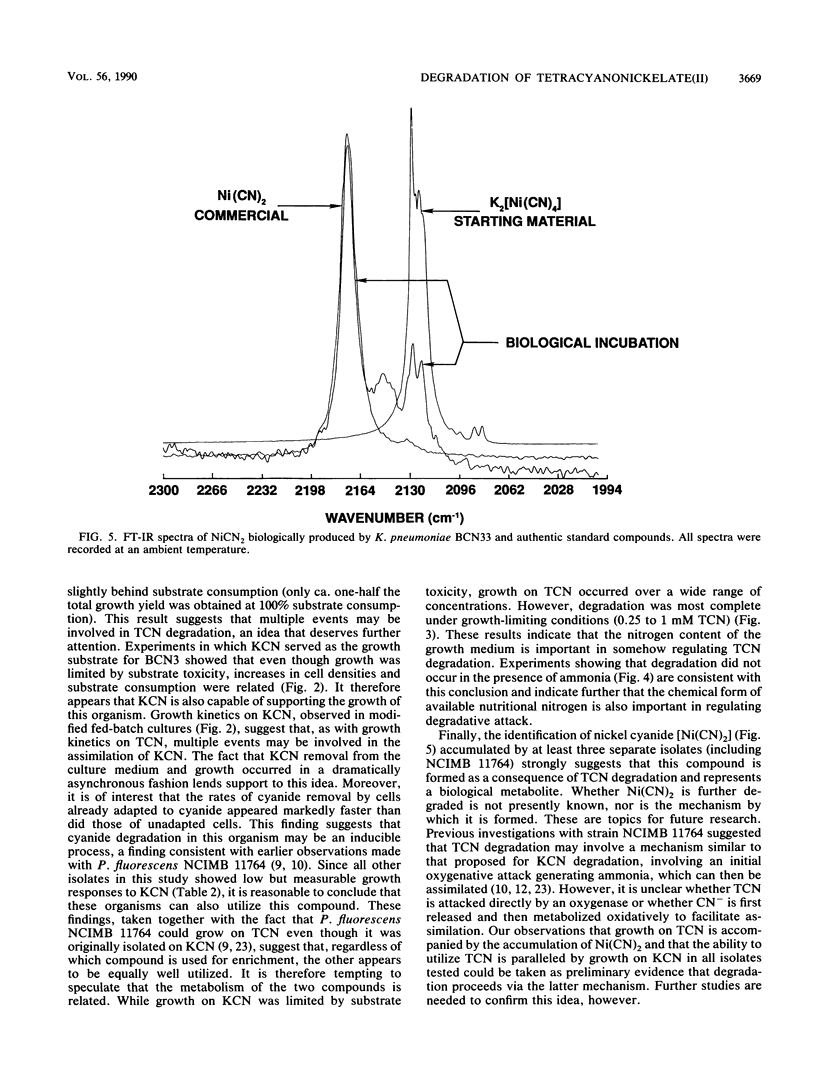
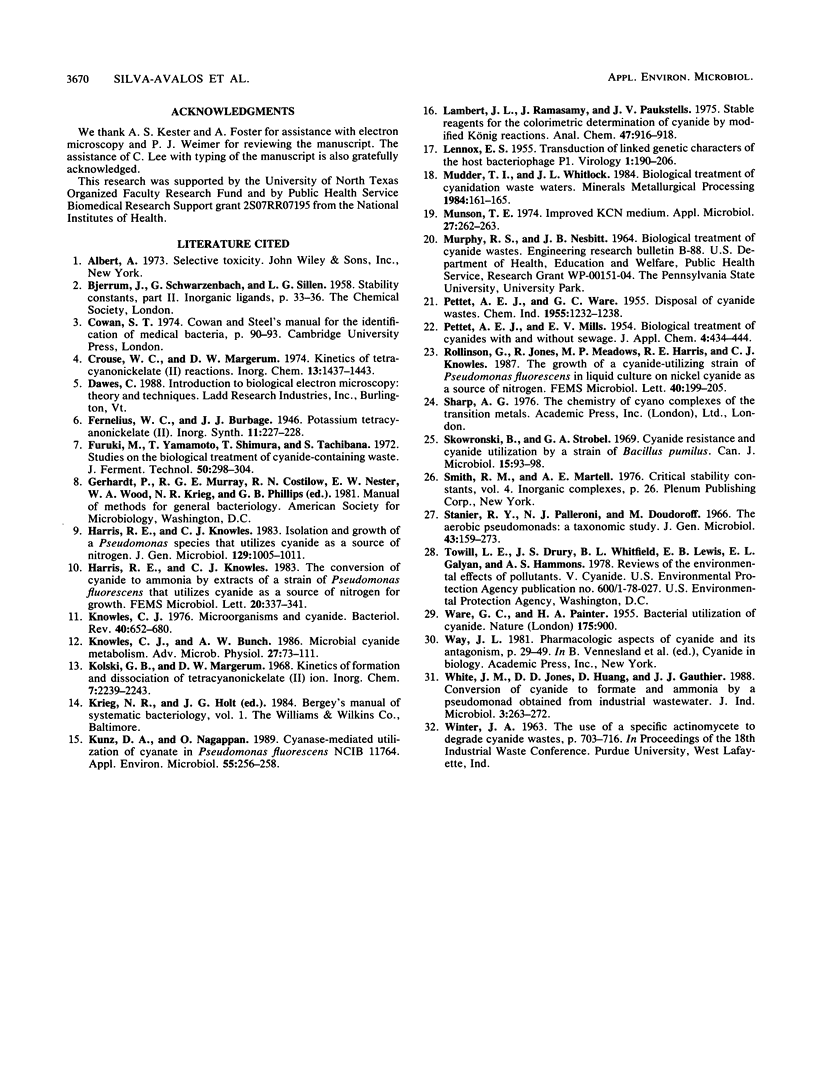
Selected References
These references are in PubMed. This may not be the complete list of references from this article.
- Harris R., Knowles C. J. Isolation and growth of a Pseudomonas species that utilizes cyanide as a source of nitrogen. J Gen Microbiol. 1983 Apr;129(4):1005–1011. doi: 10.1099/00221287-129-4-1005. [DOI] [PubMed] [Google Scholar]
- Knowles C. J., Bunch A. W. Microbial cyanide metabolism. Adv Microb Physiol. 1986;27:73–111. doi: 10.1016/s0065-2911(08)60304-5. [DOI] [PubMed] [Google Scholar]
- Knowles C. J. Microorganisms and cyanide. Bacteriol Rev. 1976 Sep;40(3):652–680. doi: 10.1128/br.40.3.652-680.1976. [DOI] [PMC free article] [PubMed] [Google Scholar]
- Kunz D. A., Nagappan O. Cyanase-mediated utilization of cyanate in Pseudomonas fluorescens NCIB 11764. Appl Environ Microbiol. 1989 Jan;55(1):256–258. doi: 10.1128/aem.55.1.256-258.1989. [DOI] [PMC free article] [PubMed] [Google Scholar]
- LENNOX E. S. Transduction of linked genetic characters of the host by bacteriophage P1. Virology. 1955 Jul;1(2):190–206. doi: 10.1016/0042-6822(55)90016-7. [DOI] [PubMed] [Google Scholar]
- Munson T. E. Improved KCN medium. Appl Microbiol. 1974 Jan;27(1):262–263. doi: 10.1128/am.27.1.262-263.1974. [DOI] [PMC free article] [PubMed] [Google Scholar]
- Skowronski B., Strobel G. A. Cyanide resistance and cyanide utilization by a strain of Bacillus pumilus. Can J Microbiol. 1969 Jan;15(1):93–98. doi: 10.1139/m69-014. [DOI] [PubMed] [Google Scholar]
- Stanier R. Y., Palleroni N. J., Doudoroff M. The aerobic pseudomonads: a taxonomic study. J Gen Microbiol. 1966 May;43(2):159–271. doi: 10.1099/00221287-43-2-159. [DOI] [PubMed] [Google Scholar]
- WARE G. C., PAINTER H. A. Bacterial utilization of cyanide. Nature. 1955 May 21;175(4464):900–900. doi: 10.1038/175900a0. [DOI] [PubMed] [Google Scholar]


